One of my true passions is obviously aviation, but not just those amazing aircraft that take to the air or can be seen immaculately restored (or not so as the case may be) in museums around the world. I also am fascinated by the process that gets historic aircraft that have seen better days back into the air or on display in the museums for us all to enjoy. One great place to see a very diverse collection of such aircraft is in the UK at the Conservation in Action section of the Imperial War Museum Duxford (their aircraft restoration hangar). I had the privilege of visiting this fantastic museum in June 2012 and saw aircraft from World War Two, the Cold War and the Falklands Conflict.

The Falklands Conflict occurred in 1982. Although in a far off place, the UK was victorious over Argentina in a battle for the Falklands Islands that lasted 74 days between April and June of that year. Argentina in a long running dispute over British sovereignty of the islands invaded them; the UK then sent a naval fleet including two aircraft carriers: HMS Hermes and HMS Invincible (with helicopters, a small number of Harrier GR.3’s and a 2 squadrons of Sea Harrier VTOL jets – although potentially outnumbered by the Argentine Air Force the Sea Harriers soon proved their worth and established air superiority over the Islands) along with troops (including regular infantry, Commandos and the SAS) to conduct an amphibious assault and retake the islands. This counter invasion was supported by long-range Avro Vulcan bombing raids known as the “Black Buck” raids conducted over a 15,000 kilometre/ 9,200 mile round trip from Ascension Island in the South Atlantic Ocean that were completed with the aid of air to air refuelling. These raids had the task of taking out the paved airfield at Stanley to prevent the Argentines from flying combat aircraft there and also their air defence radars on the islands.
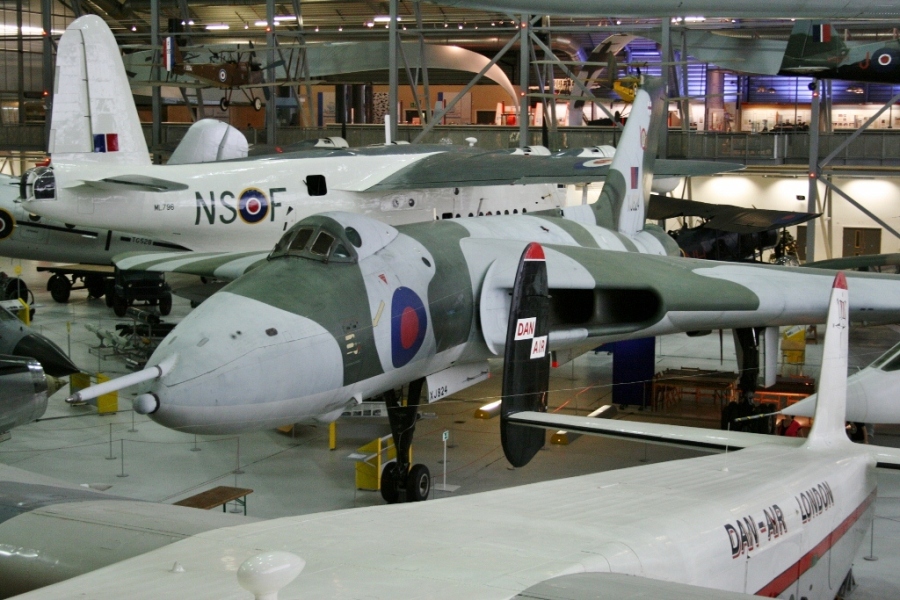
Although the runway at Stanley was too short for fast jets (which had to fly from mainland Argentina) they were never truly incapacitated and the Argentines could operate the FMA IA-58 Pucara ground attack and counter insurgency (COIN) aircraft from there. At the end of the conflict 6 of these aircraft were taken to the UK as war trophies and one is currently being restored at Duxford. While I was looking at this aircraft I started to talk to a British man next to me, he just happened to be a veteran of the conflict. His comment about the Pucara was simple: “a bloody pest“!


One aircraft nearing completion in the restoration hangar was a recently retired British Aerospace Harrier GR.9 that was used in combat over Afghanistan (this one will be displayed in the IWM London). The GR.9 also known as the Harrier II was the last variant of VTOL jet that was first tested in action over the Falklands.
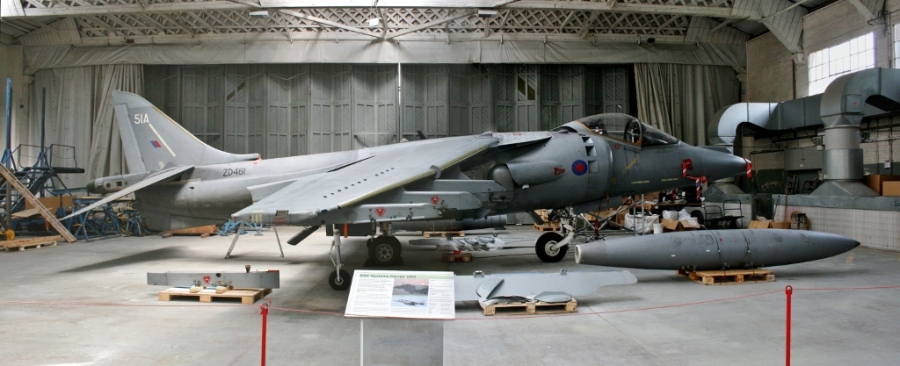
There were a number of World War Two era German aircraft in various states of restoration. A Junkers Ju-52 transport, Fieseler Fi-156 Storch liasion aircraft and a Spanish built Casa 2-111B which was a licence built version of the Heinkel He-111 medium bomber (with different engines and guns). The latter still has a very long way to go to being fully restored.




Another aircraft once used in Germany that was tucked away at the back of the restoration hangar was a Mil Mi-24 Hind D helicopter gunship. This example was a survivor from the former air force of the German Democratic Republic (GDR i.e. Communist East Germany).
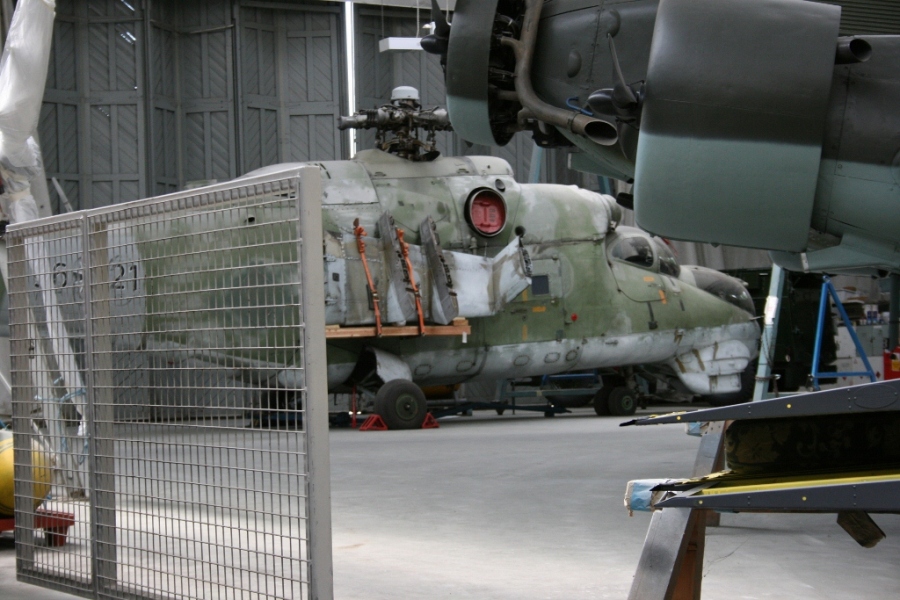
Amongst the various restoration projects was a Japanese World War Two era Mitsubish Zero A6M3 fuselage. This is another long-term restoration as the aircraft appears to have been a wreck and the wings have been crudely cut off at some stage!

There is more to see than just aircraft in this hangar. While I was there they also had on display General Bernard “Monty” Montgomery’s 1941 Humber Super Snipe staff car and a 1950’s Czechoslovakian communist era Praga M53/59 Self-Propelled Anti-Aircraft Gun (an armoured truck fitted with an anti-aircraft gun). Montgomery’s staff car was used to transport him while he commanded the British Eighth Army in North Africa and Italy during World War Two (over the period of 1942-1943). He was later to command the British ground forces in the 1944 Allied D-Day invasion of France (Operation Overlord). The car remained in Italy to be used by the new Eighth Army commander, before being returned to the UK and being presented back to Humbers parent company. It was then given to the IWM in 1997.
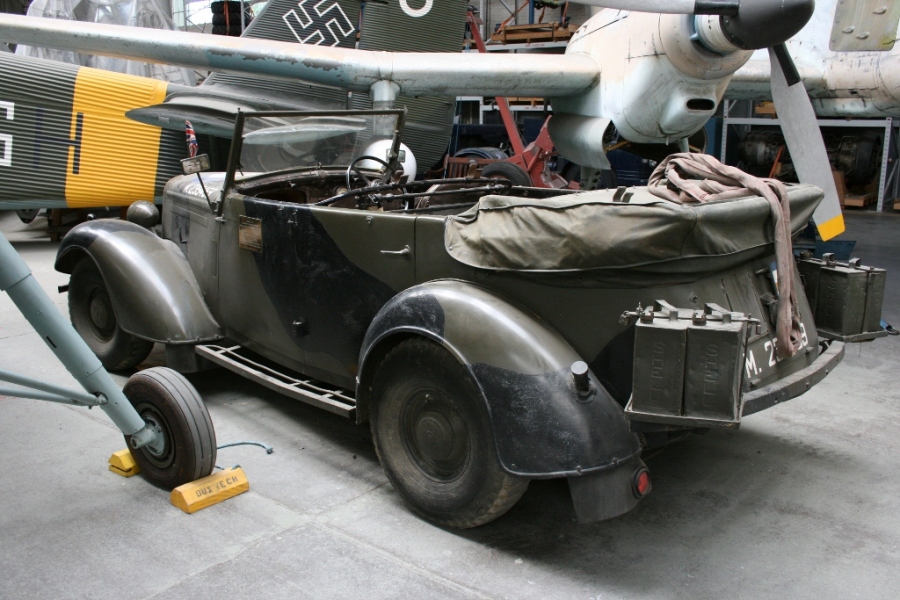
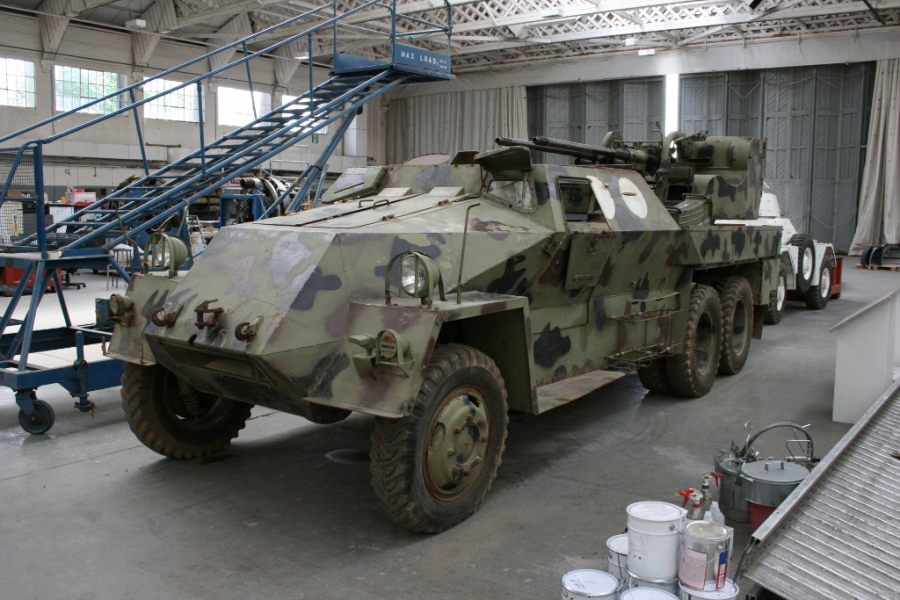
Don’t miss this hangar if you visit Duxford as it is a fascinating insight in what goes on behind the scenes. The amount of work it takes to get these aircraft and vehicles back into their near original condition is a credit to the museum staff.

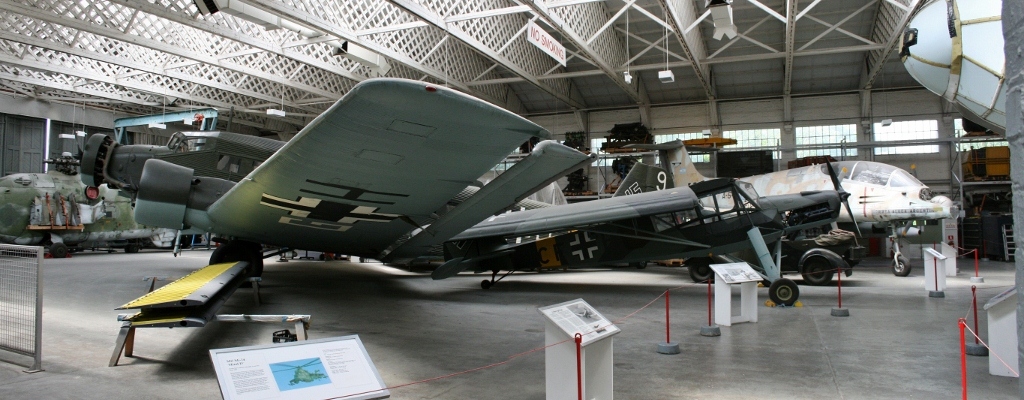
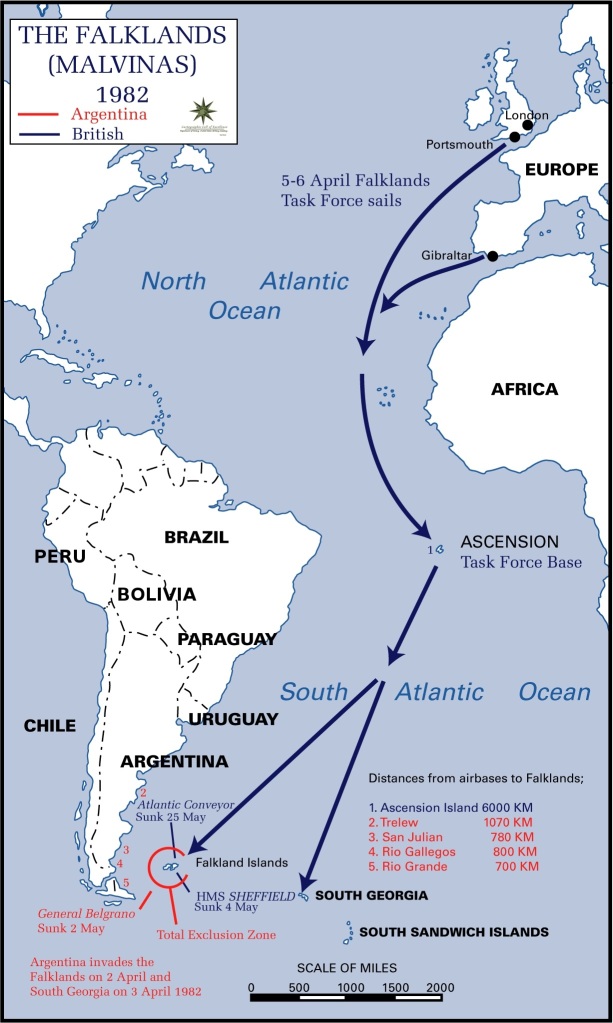
[…] Battle of Britain (the story of Britain’s air defence from World War One to the Cold War), Conservation in Action (aircraft restoration hangar) and the American Air Museum (the story of American air […]
LikeLike
Dear sir / Madam.
I am now 78 years old, as a boy of 5 – up to 17 years old, I had a piece of Heinkel 111 that crashed near bye.
It was about 3′-4′ long, 2′ wide, curved length-ways, no flat bottom, (like an up-turned ‘U’ shape. It had 2 cut-outs, and one side, half the length was deeper than the other side. My small brother and I used to sit in it, playing dog fights, (I was 5 then, my brother 3). It had rivet holes all around it, there were no torn edges. It was obviously an iterm, not a
piece torn off with gagged edges.
Would it be possible to establish where it came from, or what it was we were playing with ?
When we moved in 1956-7 my step father binned it !
I think I might have a drawing – model somewhere on this P.C, showing what it looked like.
I would be interested as to your thoughts.
With yours sincerely,
Mr Peter Agate
Ex RAF Cpl. carpenter RAF Hendon
LikeLiked by 1 person
Hi Peter, without seeing it, this kind of sounds like a section of the belly cupola that was used for gunnery positions – see a cutaway drawing at this link
http://www.ww2site.eu/heinkel-he-111-gallery-videos/
LikeLike
Hi Peter, in regards to tracking down the aircraft, perhaps contact the RAF Museum Henson or IWM London museums, their history archivists may have info on crash sites in the area you lived as a kid. There are websites with anecdotal info of different crash sites in the UK too.
LikeLike
Dear Deano, Thank you for your reply.I was going to start doing all this way back some 4-5 years ago, but I went illand spent six months in hospital here in Inverness, then closer to home in the Invergordon hospital trying to learn to walk. Anyway I found my copy of what I made up on TurboCAD 21 pro, but if you will bare with me, I am going to make another one, I remembered something about it. There were no square corners in the cut out, and the more I think about it, it was about the same size as our coffee table, so I will do that as well as a comparison. Sorry I could not down-load the pdf. down-load, its me, my brain don’t go that far, sorry, But ! I looked at the pictures of the Casa 2-111B, I don’t think it was a cupola that comes underneath, not big-enough for some one laying inside, at 5 & 3 years old we could get just sit upright inside, back-to-back. But looking at the pic’s, although not showing or visible, we are looking at the port inner wing root, could it have been a landing light housing cover plate ? No, I know you most probably would not know about crash sites, let-a-lone one that nobody witnessed at the time, (actually that’s no. 2 in that area). No, but your right, the RAF museum, and keep bashing on with records etc, that is my only choice. Unless, my 3-4 guns I remember are still buried where I last saw them, 1944, that’s my proof. I have looked on ‘Google Earth’, there’s no reason why they should not be there ! In the mean time, thank you for your help, and I will be back, hopefully with 4screen shots as ‘attachment’s. With kind regards Pete Agate
WordPress.com Deano commented: “Hi Peter, in regards to tracking down the aircraft, perhaps contact the RAF Museum Henson or IWM London museums, their history archivists may have info on crash sites in the area you lived as a kid. There are websites with anecdotal info of different c” | | Respond to this comment by replying above this line |
| | | |
| New comment on Aces Flying High | |
| | | Deano commented on Aircraft restoration at IWM Duxford. in response to Peter Agate: Dear sir / Madam. I am now 78 years old, as a boy of 5 – up to 17 years old, I had a piece of Heinkel 111 that crashed near bye. It was about 3′-4′ long, 2′ wide, curved length-ways, no flat bottom, (like an up-turned ‘U’ shape. It had 2 cut-outs, and one … Continue reading “Aircraft restoration at IWM Duxford” Hi Peter, in regards to tracking down the aircraft, perhaps contact the RAF Museum Henson or IWM London museums, their history archivists may have info on crash sites in the area you lived as a kid. There are websites with anecdotal info of different crash sites in the UK too. | Reply | Comments |
|
|
| Want less email? Unsubscribe from all follow-up comments or modify your Subscription Options. |
|
| |
|
| Thanks for flying with WordPress.com |
|
| | Virus-free. http://www.avg.com |
LikeLiked by 1 person
Thanks Peter, It would be interesting to see it. Perhaps it was something to do with the engine cowlings, undercarriage fairings etc?
LikeLike
Hi Peter, perhaps it is part of the engine cowling or undercarriage fairing?
Regards
Deano
LikeLike
Hi Deano, Sorry to trouble you, but did you receive my last ‘E’. I sent it on the 10th October ? Kind regards Pete Agate
WordPress.com Deano commented: “Hi Peter, perhaps it is part of the engine cowling or undercarriage fairing? RegardsDeano” | | Respond to this comment by replying above this line |
| | | |
| New comment on Aces Flying High | |
| | | Deano commented on Aircraft restoration at IWM Duxford. in response to PETER AGATE: Dear Deano, Thank you for your reply.I was going to start doing all this way back some 4-5 years ago, but I went illand spent six months in hospital here in Inverness, then closer to home in the Invergordon hospital trying to learn to walk. Anyway I found my copy of what I made up … Continue reading “Aircraft restoration at IWM Duxford” Hi Peter, perhaps it is part of the engine cowling or undercarriage fairing? Regards Deano | Reply | Comments |
|
|
| Want less email? Unsubscribe from all follow-up comments or modify your Subscription Options. |
|
| |
|
| Thanks for flying with WordPress.com |
|
| | Virus-free. http://www.avg.com |
LikeLike
Hi Peter, sorry, no I didn’t see it (last was towards the end of September)
LikeLike